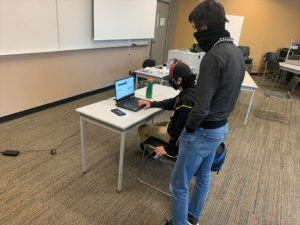Camosun College started a five-month dual-credit program for high school students this September. The Discovery Technology program, funded by the Ministry of Advanced Education, Skills and Training, will help high-school students earn college credits and high-school credits at the same time. The students in the program will get scholarships through their school district to complete the program.
Discovery Technology aims to help improve high-school students’ skills by allowing them to take engineering courses at a post-secondary level. The program will be available to students from the Victoria, Saanich, Sooke, Gulf Islands, and Cowichan Valley school districts.
Camosun south island partnership director Nicola Priestly says that the program started with the intention to expose students to a wide range of industries within the technology sector.
“We thought with the end in mind of, ‘How do we expose students to the world of technology and allow them to smoothly transition from high school to post-secondary?”’ says Priestly.

The original plan for the program—which includes two post-secondary courses and three high-school courses—included work-experience placements for around 100 hours.
“COVID has put a little wrinkle in that plan,” says Priestly. “Even though students aren’t going out on work-experience placements in the way we’d hoped, we’re really trying to give them as much industry connection as possible. We started with a lot of resume-building and reaching out to companies for Zoom informational interviews to make connection, maybe going on a job shadow if the company’s comfortable with that, we’ve got our groups going out on tours and being able to, ideally, connect with as many companies as possible, so by the end of the program they’ve not only experienced all of the different areas, maybe focusing on a specific area that they are really keen on, and then made some great industry connections within that area.”
COVID restrictions have also changed the teaching experience this semester.
“Students can go on campus every Thursday and be with our high-school teacher. We’ve seconded Jeff Horncastle to really be kind of the conduit for the students. Jeff is not only teaching the high-school courses, but he’s helping bridge the gap between the post-secondary courses as well.”
While technology-based courses often have more men in them, Priestly says that’s changing a bit and she’s seeing it in the Discovery program.
“We have a really great mix of gender,” she says. “We’ve got about five ladies that are in the program, which is always nice to see, because sometimes it’s a little bit more male, so, awesome to see women in our program.”
Priestly says the college has already heard some positive feedback from the students in the program.
“There’s lots of students that really enjoy being on a computer, and they like coding, and they like electronics,” she says. “So we were really lucky for the first version of this program that we got lots of kids that were really keen.”
However, Camosun also allows the students to explore other programs.
“Students are taking a few extra lessons from one of our Civil Engineering teachers,” she says. “It’s not part of a course, but it’s a couple Fridays where a Civil Engineering instructor works with the students to expose them to careers within Civil Engineering.”
And due to the success of the program and the positive feedback the college has received, there’s more where the Discovery program came from.
“The goal is that each district takes the Discover Technology program—like they took the TASK [Trades Awareness Skills & Knowledge] program—and runs their own versions of the program,” says Priestly. “So now that we’ve offered a regional Discover Technology program, the goal now is for each district is to take that Discover Tech program and make it their own and offer it in-district.”
